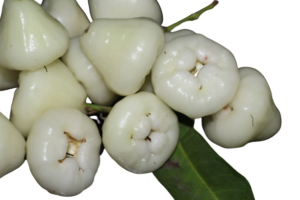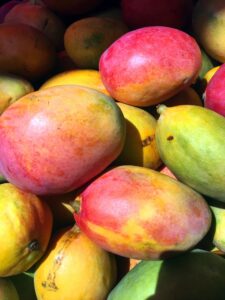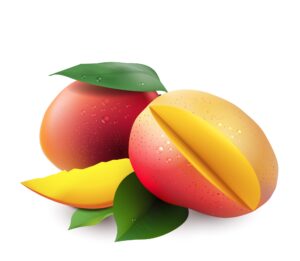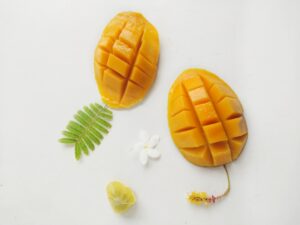Come summer and the urge to indulge into pulpy and juicy mangoes is irresistible for most of us. However, when it comes to health issues like diabetes and kidney problem; caution is advised to avoid blood sugar spikes as well as derangement in your kidney parameters. Also, it is tricky to find apt and accurate guidance about kidney dietsas there rare nutritionists focusing onkidney diet counselling in India. But the question arises is – are all fruits supposed to be given up if you have diabetes and kidney problem?(medically termed as diabetic kidney disease when diabetes is the contributor of kidney disease). Well, the answer is NO and this itself may seem to be a savior for many.
Fruits offer various health benefits from providing dietary fiber to antioxidants, from aiding weight loss to contributing healthy vitamins and minerals. However, when it comes to health conditions like high blood sugar, fruits are often ranked low as they contain fructose, which is also a type of sugar. All sugars can contribute to rise in blood sugar levels, however; not all fruits are unsafe. /few points should be kept in mind before starting these fruits:
1. Avoid fruit juices: Fruit juices have higher glycemic index (glycemic index is a measure of the capacity of a food item to raise your blood sugar 2 hours after consumption of it) and hence should be avoided for ones with diabetes. Making one glass of juice may requires larger quantity of fruitswhich can add to the burden of potassium as well as sugar. Hence, fruit juices pose a concern for both diabetes and kidney problem. So, theyare best kept away.
2. Opt for fruits as mini meals: Prefer these fruits as a mid-meal (between breakfast and lunch or between evening snack and dinner), not along with meals. Eating them along with meals may lead to spike in blood sugar, avoid them especially with elaborate meals i.e. during festivals or occasions.
3. Avoid fruits when your serum potassium is high: Serum potassium is an electrolyte that may get deranged in your blood when your kidneys have issues especially diabetic kidney disease. If your serum potassium is above 5.5 mEq/ L it is ideally important to reduce the quantity and/ or frequency of fruits for which you should seek guidance from a Renal Nutritionist.If your serum potassium level is above 6.0 mEq/L, you willneed to avoid fruits till potassium levelreturns to normal range.
In the below section, fruits have been categorized as low potassium fruits and moderate to low potassium fruits. Low potassium ones should be taken by kidney patients who have borderline high potassium level in blood. Moderate to low potassium fruits can be consumed by patients who always have their serum potassium levels within normal range i.e. 3.5-5.1mEq/L or mmol/L
4. Avoid tinned and/ or processed fruits: Tinned and processed food items pose a threat for both diabetes and kidney problem, hence they should be avoided.
Below is a list of 12 fruits safe for diabetic kidney disease and the good news is that it includes several varieties of mangoes:
1. Green apple: Apples are good sources of dietary fiber called pectin which has numerous health benefits. They are low in glycemic index as well as glycemic load and hence preferrable for diabetics. The potassium content in green apple is 94.5 mg/ 100 gram; which makes them favourable for kidney patients as well including dialysis patients.

2. Safed jamun: It is also known as wax apple and mostly available after summers. Its potassium content is 103 mg/ 100 grams.These wax apples have small and they have hairy erruptions on the top which can be discarded. In 100 grams, you may easily consider 4-5 jamuns which can be a treat or you may also chop them and add them to cold salads. These are low in potassium as well as very low in calories and contain good amount of dietary fiber. Hence, they are safe for consumption for ones with diabetes and kidney problem.
3. Pear: Pear too contains good amount of dietary fiber, is low in calories and low in potassium. Its potassium content is 106 mg/ 100 grams. A medium pear ranks in top 3 fruits amongst list of fruits safe for diabetic kidney disease

4. Gulabkhus mango: Although the glycemic index of mango is not high, but it can lead to elevation in blood sugar when taken as a juice or in form of aamras. When taken as few slices, they can be easily eaten both by ones with diabetes as well as kidney disease. The potassium content in Gulabkhus mango is 115 mg/ 100 grams; hence 4 slices can be opted during summer season.
5. Red apple: The potassium content of red variety of apples isslightly higher than that of green variety i.e.116 mg/ 100 grams. Hence, it can easily be accommodated into the diet of diabetes as well as kidney patients.
6. Watermelon: Juicy fruits are mostly a preferred option especially during summers but when it comes to watermelons, they are often a cause of worry for kidney patients due to their high-water content. Also, it is a fruit with high glycemic index. Now here it is worth considering that, only a fraction of kidney patients may need strict water restriction. Up until 2017, watermelon was categorized as a medium potassium fruit hence was thrown out of the list of safe fruits for kidney patients. However, the recent changes in the Indian Food Composition Tables published by the National Institute of Nutrition in 2017, categorizes it as amoderate to low potassium fruit, leaving doors open for its accommodation into kidney diet. The revised potassium content of watermelon is 124 mg/ 100 grams, leaving a scope of eating 7-8 cubes, at least 2-3 times a week.
Now coming to the issue of glycemic index, although it may be highbut the glycemic load of watermelon is very low. Hence, it can be preferred by individuals with diabetes as well as kidney disease.

7. Neelam mango: This variety is a moderate to low potassium variety. Its potassium content in this mango is 137 mg/ 100 grams, leaving a scope for eating 3-4 slices as a mid-meal.
8. Himsagar mango: This is usually found in West Bengalin India. Its potassium content is similar to that of Neelam mango, hence leaving a scope for it to enter into list of fruits safe for diabetic kidney disease.
9. Strawberry: Strawberries have a low glycemic index as well as low glycemic load. as Its potassium content is 140 mg/ 100 grams making it a moderate to low potassium fruit.4-5 strawberries when preferred as mid meal, may not raise the blood sugar and may not derange the potassium readings as well.
10. Pineapple: Pineapple is a fruit with medium glycemic index and the sugar raising potential may increase with the ripeness of any fruit including pineapple. Also, it is a moderate to low potassium fruit as its potassium content is 143 mg/ 100 grams. Hence, preferring it in moderation i.e. 4-5 slices and not more may be a wiser option.
11. Baganpalli mango: This variety too is a moderate to low potassium variety of mango and can be preferred as 3-4 slices/ day. Its potassium content is 144 mg/ 100 grams.

12. Kesar mango: Originating from Gujarat, hence also known as Gir mango, this variety is sweet and delicious. It is a moderate to low potassium variety of mango and can be preferred as 3-4 slices/ day by both individuals with diabetes as well as kidney disease. The potassium content in kesar mango is 146 mg/ 100 grams
With this extensive list of moderate to low potassium and diabetes friendly fruits, you can make your summer exciting even with diabetic kidney disease. In order to avail quick, easy and healthy diabetes friendly recipes, click here. In order to avail low potassium, low phosphate and healthy recipes for diabetic kidney disease, click here.
NutriKonnect is a comprehensive platform providing tailor-made nutrition counselling for patients with kidney problems including chronic kidney disease, hemodialysis, peritoneal dialysis, kidney transplants, kidney stones, etc. At NutriKonnect – Dr Rachana Jasani; is one of the most trusted Renal Nutritionists providing personalized Kidney Diet Counselling in India. She is also a Certified Diabetes Educator from the International Diabetes Federation.
Reference: The dietary values mentioned above have been sourced from Indian Food Composition Tables (2017) published by the National Institute of Nutrition (Indian Council of Medical Research)



